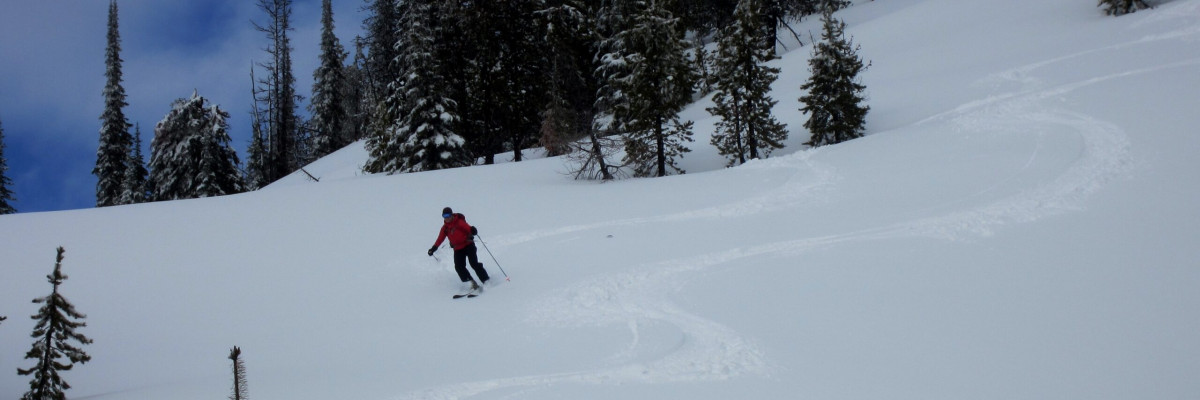The avalanche danger in the west central Montana backcountry is rated at moderate. Loose, wet slides are the main problem; but it may be possible to trigger a slab avalanche on slopes steeper than 35 degrees above 7000 feet.
Good morning this is Travis Craft with the West Central Montana Avalanche Center’s advisory for February 10, 2015. The danger rating does not apply to operating ski areas, is the sole responsibility of the U.S. Forest Service and expires at midnight.
Avalanche and Weather Discussion
This morning we are under a winter weather advisory. Mountain temperatures are hovering around the freezing mark with west, northwest winds blowing 20mph and gusting to 30mph.
The advisory area had rain up to 7000 feet, with wet snow at higher elevations, on Saturday and Monday. We had a brief high-pressure window on Sunday. Temperatures have remained unseasonably warm in the mountains.
Dudley was in the Rattlesnake yesterday and reported lots of natural and triggered loose, wet snow slides. I observed similar slides at Lolo Pass. Steve and Tim were in the southern Swans and thought big wet sluffs are also the main concern. Loose slides could be a problem if you cannot get out of one and it carries you into a terrain trap.
Steve and Tim did get propagation on a deep faceted layer buried 50cm into the snowpack in the Swans. We saw this same deep layer propagating in the Rattlesnakes Sunday. There is a public observation that reported the same failure in the central Bitterroot. This is a problem that requires you dig a pit to identify it.
The distribution of this layer varies throughout the advisory area. If I were going to recreate on a slope 35 plus degrees above 7000ft, I would take 5 minutes and dig a pit to see if that layer is there.
Weather and Avalanche Outlook
Snow is expected through this evening. This snow is being deposited on an already weak surface. I expect the avalanche danger to rise throughout the day. Look for weak layers on steep slopes and expect loose, wet snow slides. High pressure is forecast to build in after today.
Logan King will issue the next regularly scheduled advisory on Friday, February 13. Yep, Friday the 13th.
























